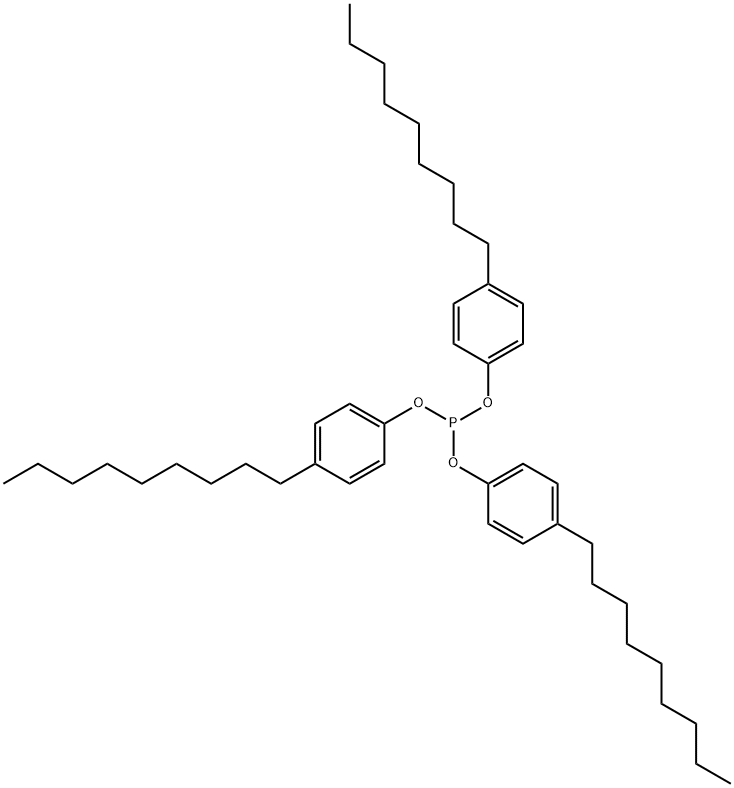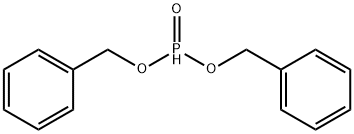Triphenyl phosphite
Synonym(s):TPO;Triphenyl phosphite;Triphenoxyphosphine;(PhO)3P;P(OPh)3
- CAS NO.:101-02-0
- Empirical Formula: C18H15O3P
- Molecular Weight: 310.28
- MDL number: MFCD00003032
- EINECS: 202-908-4
- SAFETY DATA SHEET (SDS)
- Update Date: 2025-09-25 17:15:13

What is Triphenyl phosphite?
Chemical properties
Water-white to pale-yellow solid or oily liquid; pleasant odor. Combustible.
The Uses of Triphenyl phosphite
Triphenyl phosphite can be used:
- As a source of phosphorus and as a ligand for the synthesis of transition metal phosphide nanoparticles via heating-up process.
- To convert alcohols to alkyl halides.
- As a peptide coupling agent.
- As a low-temperature source of singlet oxygen after forming an adduct with ozone.
- To synthesize bromotriphenoxyphosphonium bromide, a brominating agent, by reacting with bromine.
The Uses of Triphenyl phosphite
Chemical intermediate, stabilizer systems for resins, metal scavenger, diluent for epoxy resins.
The Uses of Triphenyl phosphite
Stabilizer/antioxidant for vinyl plastics and polyethylene, polypropylene, styrene copolymers, and rubber.
Air & Water Reactions
Insoluble in water.
Reactivity Profile
Organophosphates, such as Triphenyl phosphite, are susceptible to formation of highly toxic and flammable phosphine gas in the presence of strong reducing agents such as hydrides. Partial oxidation by oxidizing agents may result in the release of toxic phosphorus oxides.
Health Hazard
Triphenyl phosphite (TPP) is a skin irritant and sensitizer in humans and is neurotoxic in laboratory animals.Systemic effects have not been reported in humans.
Safety Profile
Poison by intraperitoneal and subcutaneous routes. Moderately toxic by ingestion. An experimental eye and severe human skin irritant. Combustible when exposed to heat or flame. To fight fire, use CO2, mist, dry chemical. When heated to decomposition it emits toxic fumes of POx. See also PHENOL.
Purification Methods
Its ethereal solution is washed succesively with aqueous 5% NaOH, distilled water and saturated aqueous NaCl, then dried with Na2SO4 and distilled under vacuum after evaporating the diethyl ether. [Walsh J Am Chem Soc 81 3023 1959, Verkade & Coskren in Organo Phosphorus Compounds (Kosolapoff & Maier eds) Wiley Vol 6 pp 211-577 1973, Beilstein 6 IV 695.]
Properties of Triphenyl phosphite
| Melting point: | 22-24 °C (lit.) |
| Boiling point: | 360 °C (lit.) |
| Density | 1.184 g/mL at 25 °C (lit.) |
| vapor density | 10.7 (vs air) |
| vapor pressure | 5 mm Hg ( 205 °C) |
| refractive index | n |
| Flash point: | 425 °F |
| storage temp. | Store below +30°C. |
| solubility | methanol: 25 mg/mL, clear |
| form | Liquid |
| color | Clear colorless to pale yellow |
| PH | 1 (200g/l, H2O, 20℃) |
| Water Solubility | insoluble |
| Sensitive | Air & Moisture Sensitive |
| BRN | 1079456 |
| Dielectric constant | 3.2(24℃) |
| Stability: | Stable. Combustible. Incompatible with strong oxidizing agents. |
| CAS DataBase Reference | 101-02-0(CAS DataBase Reference) |
| NIST Chemistry Reference | Phosphorous acid, triphenyl ester(101-02-0) |
| EPA Substance Registry System | Triphenyl phosphite (101-02-0) |
Safety information for Triphenyl phosphite
| Signal word | Warning |
| Pictogram(s) |
 Exclamation Mark Irritant GHS07  Environment GHS09 |
| GHS Hazard Statements |
H302:Acute toxicity,oral H315:Skin corrosion/irritation H317:Sensitisation, Skin H319:Serious eye damage/eye irritation H410:Hazardous to the aquatic environment, long-term hazard |
| Precautionary Statement Codes |
P261:Avoid breathing dust/fume/gas/mist/vapours/spray. P273:Avoid release to the environment. P280:Wear protective gloves/protective clothing/eye protection/face protection. P301+P312:IF SWALLOWED: call a POISON CENTER or doctor/physician IF you feel unwell. P302+P352:IF ON SKIN: wash with plenty of soap and water. P305+P351+P338:IF IN EYES: Rinse cautiously with water for several minutes. Remove contact lenses, if present and easy to do. Continuerinsing. |
Computed Descriptors for Triphenyl phosphite
| InChIKey | HVLLSGMXQDNUAL-UHFFFAOYSA-N |
Triphenyl phosphite manufacturer
JSK Chemicals
New Products
4,4-Difluoropiperidine hydrochloride tert-butyl 9-methoxy-3-azaspiro[5.5]undecane-3-carboxylate Indole Methyl Resin N-Isopropylurea N,N-Dicyclohexylcarbodiimide(DCC) MELDRUMS ACID 5-METHYLISOXAZOLE-4-CARBOXYLIC ACID Magnessium Bis glycinate Zinc ascorbate 1-bromo-2-butyne 2-acetamidophenol 9(10H)-anthracenone Erythrosin B, 4-Piperidinopiperidine 2-((4-morpholinophenylamino) (methylthio) methylene) malononitrile 2,4-dihydroxybenzaldehyde 3-(4-morpholinophenylamino)-5-amino-1H-pyrazole-4-carbonitrile Methyl 2-methylquinoline-6-carboxylate 2,6-dichloro-4-nitropyridine 4-Bromo-2-chlorobenzonitrile 2-(benzylamino)acetic acid hydrochloride 4-(tert-Butoxycarbonylamino)but- 2-ynoic acid 3,4-dihydro-2H-benzo[b][1,4]dioxepine 1-Phenyl-1-cycloprppanecarboxylicacidRelated products of tetrahydrofuran








You may like
-
 Triphenyl Phosphite CAS 101-02-0View Details
Triphenyl Phosphite CAS 101-02-0View Details
101-02-0 -
 Triphenyl phosphite 95% CAS 101-02-0View Details
Triphenyl phosphite 95% CAS 101-02-0View Details
101-02-0 -
 Triphenyl phosphite CAS 101-02-0View Details
Triphenyl phosphite CAS 101-02-0View Details
101-02-0 -
 Triphenyl phosphite 98% (GC) CAS 101-02-0View Details
Triphenyl phosphite 98% (GC) CAS 101-02-0View Details
101-02-0 -
 Triphenyl phosphite CAS 101-02-0View Details
Triphenyl phosphite CAS 101-02-0View Details
101-02-0 -
 Tri Phenyl Phosphite ( TPP ), Packaging Type: CarboysView Details
Tri Phenyl Phosphite ( TPP ), Packaging Type: CarboysView Details
101-02-0 -
 Triphenylphosphite Cas no : 101-02-0View Details
Triphenylphosphite Cas no : 101-02-0View Details
101-02-0 -
 Triphenyl Phosphite CAS No. 101-02-0.View Details
Triphenyl Phosphite CAS No. 101-02-0.View Details
101-02-0
